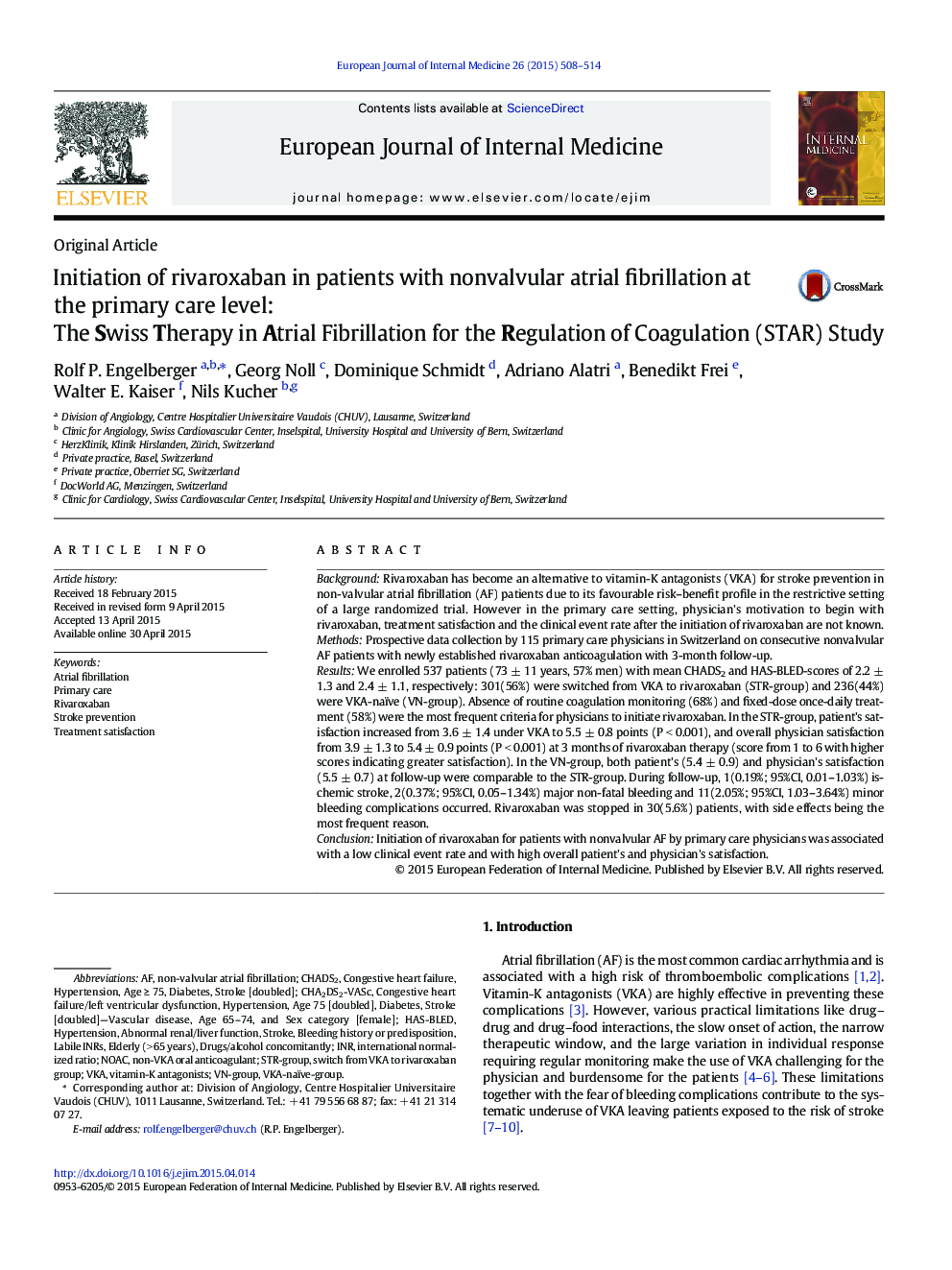| کد مقاله | کد نشریه | سال انتشار | مقاله انگلیسی | نسخه تمام متن |
|---|---|---|---|---|
| 6151575 | 1596543 | 2015 | 7 صفحه PDF | دانلود رایگان |

- Rivaroxaban initiated and managed by primary care physicians is effective and safe.
- Absence of routine coagulation monitoring was the most frequent reason to switch from VKA to rivaroxaban.
- Patient's satisfaction increased after the switch from VKA to rivaroxaban.
- Physician's satisfaction increased and time investment decreased after the switch from VKA to rivaroxaban.
- Increased treatment satisfaction might have a favourable impact on compliance.
BackgroundRivaroxaban has become an alternative to vitamin-K antagonists (VKA) for stroke prevention in non-valvular atrial fibrillation (AF) patients due to its favourable risk-benefit profile in the restrictive setting of a large randomized trial. However in the primary care setting, physician's motivation to begin with rivaroxaban, treatment satisfaction and the clinical event rate after the initiation of rivaroxaban are not known.MethodsProspective data collection by 115 primary care physicians in Switzerland on consecutive nonvalvular AF patients with newly established rivaroxaban anticoagulation with 3-month follow-up.ResultsWe enrolled 537 patients (73 ± 11 years, 57% men) with mean CHADS2 and HAS-BLED-scores of 2.2 ± 1.3 and 2.4 ± 1.1, respectively: 301(56%) were switched from VKA to rivaroxaban (STR-group) and 236(44%) were VKA-naïve (VN-group). Absence of routine coagulation monitoring (68%) and fixed-dose once-daily treatment (58%) were the most frequent criteria for physicians to initiate rivaroxaban. In the STR-group, patient's satisfaction increased from 3.6 ± 1.4 under VKA to 5.5 ± 0.8 points (P < 0.001), and overall physician satisfaction from 3.9 ± 1.3 to 5.4 ± 0.9 points (P < 0.001) at 3 months of rivaroxaban therapy (score from 1 to 6 with higher scores indicating greater satisfaction). In the VN-group, both patient's (5.4 ± 0.9) and physician's satisfaction (5.5 ± 0.7) at follow-up were comparable to the STR-group. During follow-up, 1(0.19%; 95%CI, 0.01-1.03%) ischemic stroke, 2(0.37%; 95%CI, 0.05-1.34%) major non-fatal bleeding and 11(2.05%; 95%CI, 1.03-3.64%) minor bleeding complications occurred. Rivaroxaban was stopped in 30(5.6%) patients, with side effects being the most frequent reason.ConclusionInitiation of rivaroxaban for patients with nonvalvular AF by primary care physicians was associated with a low clinical event rate and with high overall patient's and physician's satisfaction.
Journal: European Journal of Internal Medicine - Volume 26, Issue 7, September 2015, Pages 508-514